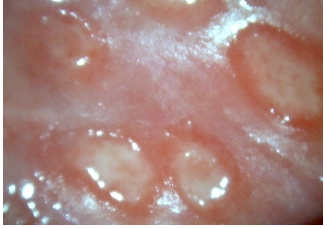Check out today’s Step 2 CK Qmax Question Challenge.
Know the answer? Post it in the comments below! Don’t forget to check back for an update with the correct answer and explanation (we’ll post it in the comments section below).
 A 62-year-old attorney presents to a primary care clinic complaining of chronic lower back pain and stiffness. He denies any history of trauma or strain to his back. He states that the stiffness is most severe in the morning and improves over the course of the day, especially after he exercises. Physical examination reveals decreased range of motion in the lumbar spine, as well as loss of natural lordosis. X-ray of the spine is shown in the image.
A 62-year-old attorney presents to a primary care clinic complaining of chronic lower back pain and stiffness. He denies any history of trauma or strain to his back. He states that the stiffness is most severe in the morning and improves over the course of the day, especially after he exercises. Physical examination reveals decreased range of motion in the lumbar spine, as well as loss of natural lordosis. X-ray of the spine is shown in the image.
His condition is most likely associated with which of the following?
A. Anti-DNA antibodies
B. History of gonococcal infection
C. HLA-B27
D. Rheumatoid factor
E. Severe loss of bone density
———————–
Want to know the ‘bottom line?’ Purchase a USMLE-Rx Subscription and get many more features, more questions, and passages from First Aid, including images, references, and other facts relevant to this question.
This practice question is an actual question from the USMLE-Rx Step 2 CK test bank. Get more Step 2 CK study help at USMLE-Rx.com.




C.
C- ankylosing spondylitis
E
C HLA B27
C
c
The correct answer is C. This patient most likely has ankylosing spondylitis (AS), a seronegative spondyloarthropathy associated with the human leukocyte antigen-B27 (HLA-B27). AS often initially presents with the complaint of insidious low back pain, and most commonly affects men <40 years old. Other common symptoms include buttock and heel pain, as well as morning stiffness that improves over the course of the day and with exercise. As the disease progresses, fibrosis and ankylosis of the joints leads to decreased range of motion, as well as the fibrotic, abnormally fused "bamboo spine" found on x-ray (seen here). Treatment usually consists of non-steroidal anti-inflammatory drugs and physical therapy.
A is not correct. The presence of anti-DNA antibodies would suggest systemic lupus erythematosus (SLE). Although joint involvement is one of the classic findings, it is usually seen in the hands and knees. Moreover, this patient does not display any other signs or symptoms of SLE such as a malar rash, vasculitis, or renal involvement.
B is not correct. Reiter's syndrome (reactive arthritis) is associated with a previous sexually transmitted disease, most commonly with N. gonorrhoeae. It usually presents as a monarticular arthritis (most commonly of the knee), and common extra-articular manifestations include urethritis and conjunctivitis. This patient's symptoms do not suggest this diagnosis.
D is not correct. Presence of rheumatoid factor would suggest a diagnosis of rheumatoid arthritis. RA is unlikely given the absence of other findings supporting RA (eg, hand involvement with swan-neck or boutonniere deformities and ulnar deviation). Also, the radiographic findings are consistent with AS. Radiographic findings of RA include narrowed joint spaces, bony erosions, and soft tissue swelling surrounding affected joints.
E is not correct. Osteoporosis is the loss of normal bone density. Patients are at risk for multiple bone fractures, especially of the hip. It is frequently seen in petite, elderly white or Asian women, many of whom display a "dowager's hump," or curvature of the spine. On x-ray, bones appear lighter and less dense. Dual-energy x-ray absorptiometry (DEXA) scans are the gold standard test for measuring bone mineral density. Measurements are taken from the hip and spine, and a T-score is reported as a function of standard deviations from normal bone density. For example , a T-score of 0 represents normal bone density, while a score of -2 represents density 2 SD below normal. Osteopenia is defined as <-1 SD, and osteoporosis defined as <-2.5 SD.There is no specific association between ankylosing spondylitis and osteoporosis.